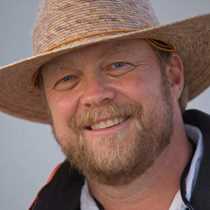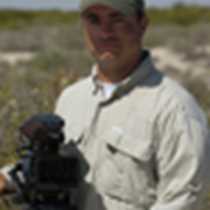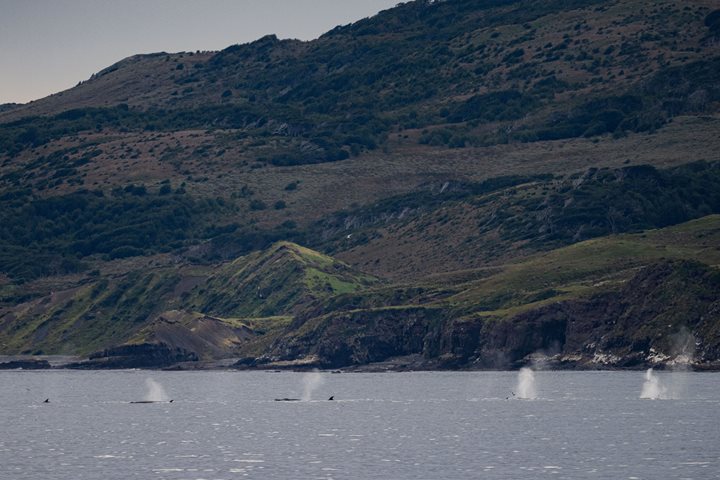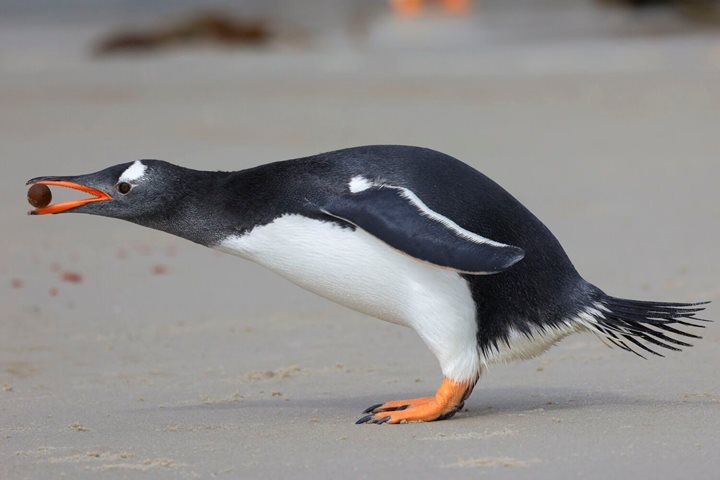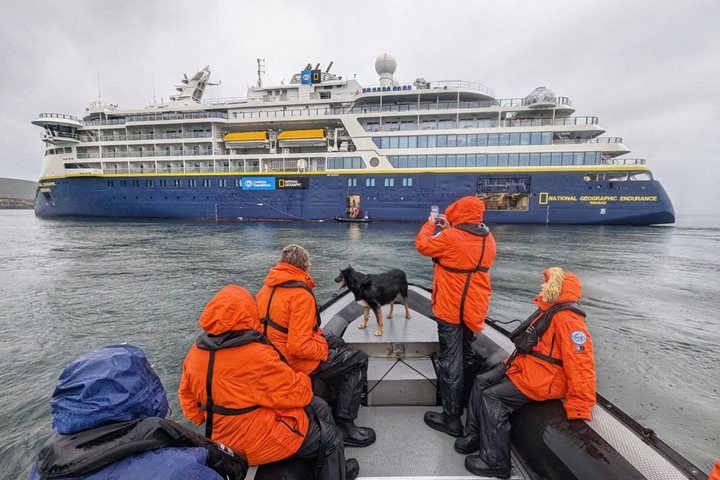Today was a day full of surprises on board the National Geographic Orion. Amazingly, our luck with the weather continued, enabling us to make a landing at one of the most remote and windswept islands in all the Falklands, Steeple Jason. The landing was still challenging, stepping ashore on tilted layers of weathered sandstone. Once on shore, we hiked across the island to the largest colony of black-browed albatross in the world.
Sneaking through the tussock grass to the edge of the colony, the view before us was breathtaking. Birds as far as the eye can see, more than 150,000 pairs on nests, in the air, out on the water. Each nest had a large albatross chick, close to two months old. Scattered among the nests were rock hopper penguins, feisty little flightless birds that run the gauntlet each time they return from sea to tend their nests and feed their chicks.
During lunch the ship repositions to Carcass Island. The long walk option takes us to a wet landing at a far beach where we hike across the island to view Magellanic penguins nesting among the tussocks. The track back to the settlement took us past sweeping views of the harbor. Once at the settlement, a lavish Falkland Islands tea awaited us. Our hosts were Rob McGill and his family, the owners of the island. It was fascinating to hear their stories of life in the islands.
But the real stars of the afternoon were the Commerson’s dolphins. Before we even launched the Zodiacs, more than two dozen of these curious black and white cetaceans waited for us to drop the boats and play. Indeed, all afternoon, the dolphins escorted the Zodiacs to shore and back, distracting us for some time as the photographers and undersea specialists among us worked hard to capture images of this very special encounter.
Back on board, the dolphins escorted us all during dinner as we charted a course for tomorrow’s adventures.



